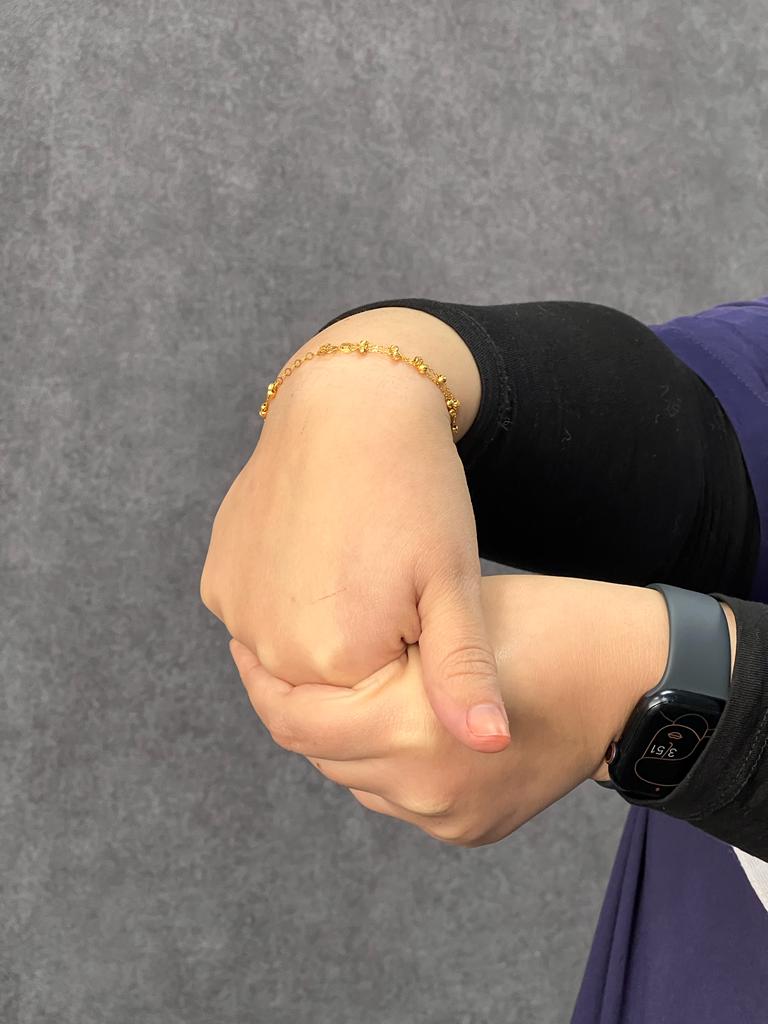
Health Blog | 3 MIN READ
Carpal Tunnel Syndrome
Dr. Alaa Hoteit
It all starts with tingling, numbness and sometimes burning sensation in your hands, and before you know it, your entire arm is in pain or your hand isn't working properly. This progression is not uncommon for carpal tunnel syndrome or CTS, so seeking help as soon as possible is essential!
What it is?
The median nerve runs down your arm and into your hand via the carpal tunnel, a small and narrow canal or tube similar to a tunnel you can drive through your car, so.. median nerve is located on the underside of the wrist. This vital nerve regulates the sensation and movement of your thumb and all of your fingers except your pinky (small finger). There are several tendons of your fingers and hand traveling through this tunnel as well, any compression on this nerve can result in pain, tingling, and numbness in your hand which stands for carpal tunnel syndrome or CTS.
It’s more common in females and commonly related to the following factors
1- Arthritis 2- Diabetes 3- Pregnancy 4- Previous Writs fracture\injury 5- Overloading the wrist and the fingers
Can CTS be treated?
Yes, it can! There 2 ways for that, either surgical or non-surgical.
1 - Non-Surgical Treatment: Usually used for less severe cases and allow you to continue doing your daily activities without pain and interruptions.
2 - Surgical Treatment: It can help in more severe cases and have an excellent and positive outcome. It’s the last option when the carpal tunnel is not responding to non-surgical treatment.
Will you make recovery from CTS?
Yes, you can! Treatment should start as soon as symptoms start, with some simple steps you can do at home like.
⁃ The home program exercises ⁃ Avoid activities that make symptoms worse ⁃ Apply cold packs in the first 2 days to reduce the pain and the swelling
Physiotherapy role:
1 - Manual Therapy : Which is a treatment technique that your therapist can do to you during the session.
2 - Neuromobilisation : Another technique your therapist can help you with it, which basically working on moving your nerves.
Home Program Exercises
Finger Extension
Finger extension exercises are critical for maintaining healthy joints and muscles in the fingers. Extension exercises can help to prevent or reduce stiffness and pain in the fingers.
Several different finger extension exercises can be performed at home. One simple exercise is to simply open and close the hand several times. This helps to stretch and strengthen the muscles and tendons in the fingers.
Another good exercise is to make a fist and then slowly extend the fingers one at a time. This exercise helps to specifically target the muscles and tendons in the fingers. Performing these exercises regularly can help keep the fingers healthy and free from pain.
Wrist Extension
The wrist extensors are a group of muscles on the back of the forearm that works to extend (straighten) the wrist. These muscles include the extensor carpi radialis longus and brevis, the extensor digitorum, and the supinator.
One simple way to stretch these muscles is to extend your arm out in front of you with your palm facing down. Use your other hand to gently pull your fingers back toward you until you feel a stretch in your forearm. Hold this stretch for 20–30 seconds, then repeat it 2-3 times.
Carpal Tunnel Stretch
If you are looking to do a carpal tunnel stretch at home, there are a few things you need to know. First, this stretch is best performed while seated. You will want to sit up straight and tall in your chair, keeping your shoulders back and down.
Next, take your right hand and place it behind your head, with your elbow pointing out to the side. Use your left hand to grab hold of your right wrist, and then gently pull your right hand towards the left side of your head. You should feel a stretch in your forearm and wrist. Hold this stretch for 30 seconds, and then repeat on the other side.
If you find that this stretch is too easy, you can try placing a rolled-up towel under your armpit on the side you are stretching. This will provide more resistance and make the stretch more challenging.
Median Nerve Flossing
The median nerve is one of the most important nerves in the arm. It runs from the shoulder to the hand and controls the muscles in the thumb. The median nerve can become compressed or pinched at any point along its route. One way to relieve pressure on the median nerve is to perform a daily routine of median nerve flossing exercises.
Start by sitting in a comfortable position with your arm resting on a table in front of you. Using your opposite hand, gently bend your wrist back and forth several times. Next, extend your arm out straight and hold it for 30 seconds. Then, using your fingers, massage the area around the base of your thumb for 30 seconds.
Repeat these exercises several times per day to help keep the median nerve healthy and prevent compression or pinching. If you begin to experience numbness, tingling, or weakness in your hand, stop performing the exercises and consult a doctor for recovery.


